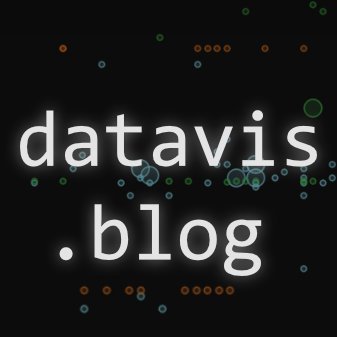
datavis.blog
@datavisblog
Occasional posts from my #Tableau blog & YouTube channel. ✍ http://datavis.blog ▶ http://youtube.com/@marcreid 💬 @marcreid
You might like
I’ve been writing monthly blog posts for the last five years. This post looks back on why I started, what I’ve learnt, and why I’m stopping. datavis.blog/2024/01/17/ref… #Tableau #blogging
In this follow-up blog post on Embedding Tableau views within Salesforce, I walk through two options for passing filters from the Salesforce UI to Tableau to ensure your embedded dashboards are showing relevant information. datavis.blog/2023/12/31/fil…
With the new Tableau View Embedding feature in Salesforce, you can now easily embed your Tableau dashboards allowing quick access to insights for Salesforce users. datavis.blog/2023/12/02/emb…
See a preview of your Tableau dashboards directly within Google docs with this new feature in version 2023.3 - a Google smart chip add-on for Tableau Cloud. datavis.blog/2023/10/30/goo…
The new Dynamic Axis Ranges feature in v2023.3 enables you to change the chart axis start and end values based on parameters. Combined with parameter actions, this makes your dashboards more dynamic based on user interaction. #Tableau #dataviz datavis.blog/2023/09/19/tab…
Highlight actions help to focus the attention of your dashboard consumers on specific points of interest. Changing the shape of the mark and/or making it fully opaque amplifies that effect. This tip shows you how. #Tableau #dataviz datavis.blog/2023/08/29/tab…
This post walks through how you can use the Multiple Values (custom list) and Wildcard Match filters, including copying and pasting a list of values from Excel to filter your dashboard in #Tableau. datavis.blog/2023/07/26/pas…
Version 2023.2 of Tableau adds two new spatial functions: OUTLINE and SHAPETYPE. This post introduces the OUTLINE function with a few example use cases including set actions and map layers. datavis.blog/2023/06/30/tab…
This post takes a quick look at this new formatting feature shipping in version 2023.2 enabling the use of dotted and dashed lines styles in #Tableau. datavis.blog/2023/05/31/tab…
Until the end of June it's now possible to create Sankey diagrams in Tableau Public in under 10 seconds with just a few clicks. Learn more in this step-by-step blog post. datavis.blog/2023/04/29/how…
How do you currently format dynamic measure fields in Tableau? This post explores three new functionality ideas to help make dynamic formatting easier. ✍️ datavis.blog/2023/03/30/dyn… #Tableau #Formatting @marcreid
▶ VIDEO: youtu.be/tynvY7Q3lHU This short video steps through how I created this dot plot chart in Tableau using a combined axis to overlay dots on top of connecting lines.

Dot plots are a space efficient way to compare values within one category split by a second category. This post introduces the chart type and provides an example use case. datavis.blog/2023/02/28/dot… #Tableau #dotplot @marcreid
▶ VIDEO: youtu.be/Zwt6eDCA_YM The Image Role feature in #Tableau let’s you show images directly in headers using a URL to an image. With Cloudinary you can dynamically generate modified images by adding parameters to those URLs. This video walks through some examples.

The new Image Role feature in #Tableau 2022.4 combined with Cloudinary’s dynamic image generation service opens up some creative possibilities for using images in your dashboard. This post walks through an example with a simple sales dashboard. datavis.blog/2023/01/23/tab…
▶ VIDEO: youtu.be/aqunvBEpnJY This video steps through examples of using the new INTERSECTS() spatial function in Tableau 2022.4 with Points & Polygons and Points & Lines - showing how to use the new function in calculations and for encoding marks in the view.

The new INTERSECTS() spatial function, introduced in 2022.4, makes it possible to determine if two spatial objects overlap without using a spatial join. This post walks through a few examples with points, polygons (buffers) and lines. datavis.blog/2022/12/28/int… #Tableau #spatial
▶ VIDEO: youtu.be/Z1DuCEyfRfI This video walks through how I created a dashboard with five dynamic containers, each containing charts relevant to a particular analysis scenario as well as dynamic titles and sheet swapping based on selection. #Tableau

This post steps through my approach - and the calculations used - for creating a dashboard that shows different charts based on five different analysis scenarios by using the dynamic zone visibility feature in #Tableau. datavis.blog/2022/11/30/tab…
Dynamic Zone Visibility in @tableau 2022.3 opens up a variety of possibilities for dynamically customising dashboards, showing & hiding charts, filters, images, text, containers & more based on calculations, parameters and the selections of marks. datavis.blog/2022/10/31/tab… #Tableau
United States Trends
- 1. #SmackDown 10.2K posts
- 2. Caleb Wilson 1,208 posts
- 3. Bryson Tiller 3,400 posts
- 4. Darryn Peterson 1,338 posts
- 5. Kansas 21.9K posts
- 6. Vesia 5,074 posts
- 7. Grammy 473K posts
- 8. Dizzy 11.7K posts
- 9. Sam Merrill N/A
- 10. UMass Lowell N/A
- 11. End of 1 18.6K posts
- 12. Georgetown 2,609 posts
- 13. Zelina N/A
- 14. Keldon Johnson N/A
- 15. #FliffCashFriday 2,533 posts
- 16. #GCWUnderstand N/A
- 17. Aleister Black N/A
- 18. #kubball N/A
- 19. #YIAYbeast N/A
- 20. Noah Clowney N/A
You might like
-
 Jennifer Dawes
Jennifer Dawes
@jreevers5 -
 Varun Jain
Varun Jain
@vizvithvarun -
 Jared Flores
Jared Flores
@VizWhat -
 Will Sutton
Will Sutton
@WJSutton12 -
 Jim Dehner
Jim Dehner
@Marketanalytic5 -
 Mehras Abdoli
Mehras Abdoli
@ItsMehras -
 Erica Hughes
Erica Hughes
@_hughej -
 Ervin Vinzon
Ervin Vinzon
@vinzonervin -
 Jessica Moon
Jessica Moon
@VizByMoon -
 Takafumi Shukuya
Takafumi Shukuya
@O_Syringa_Z -
 Shaheen Arshiya
Shaheen Arshiya
@ArshiyaShaheen -
 Chimdi Nwosu
Chimdi Nwosu
@DatavizChimdi
Something went wrong.
Something went wrong.

















































































